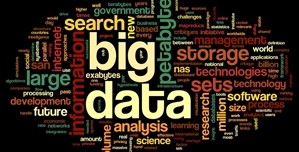Scalability and flexibility are two qualities organizations favor when searching for big data solutions.
Microsoft appears to be answering the call – implementing a list of Azure services that include an HDInsight Hadoop application and a non-relational database function. This means Microsoft training courses focused on the Azure cloud will learn how to maintain servers holding and transferring unstructured information.

Not just a SQL database
Text-based information is ubiquitous, but analyzing it is impossible for relational database management systems to achieve. Not only is Microsoft acknowledging this conundrum by offering Azure users a NoSQL service, it’s allowing them to search for written data faster than before, Mary Jo Foley of ZDNet maintained.
Foley noted the late-August release of Azure DocumentDB, which is expected to connect NoSQL’s document database features with RDMS’ transactional capabilities. The service natively supports JSON documents and divulges program libraries for languages and platforms such as JavaScript, Python, .Net and Node.js.
InformationWeek contributor Doug Henschen also detailed Azure DocumentDB’s key functions, acknowledging how the program was developed from the ground up by those working at Microsoft Research. The in-memory abilities of SQL Server 2014 were implemented to expedite processing performance, also allowing for flexible schema development.
Where does it belong?
From what Henschen discovered in a phone interview with Microsoft Corporate VP T.K. Rengarajan, it appears DocumentDB isn’t intended to be an on-premise solution, though Rengarajan neither confirmed nor denied this.
“We’ve taken a fresh start with DocumentDB; it’s born in the cloud, and it’s built with these [RDMS capabilities] in mind,” he told InformationWeek. “Sharding and multiple copies [of data] are inherent parts of the database, and we employ an internal component that can execute SQL queries at a per-shard level.”
Searching for an answer
Henschen also noted the advent of Azure Search, which is blueprinted to enable solutions to look for items through leveraging a cloud-based application programming interface. The tool provides text-indexing, possessing features such as hit highlighting, common Boolean search expressions and a faceted search.
Azure Search is somewhat related to the cloud solution’s HBase NoSQL database service. Directly related to the Hadoop platform, this application enables companies to aggregate and categorize content-heavy information, such as the data produced by social media users. Manufacturers may enroll staff in Microsoft certification courses to learn about this particular functionality, as it is capable of quickly collecting and processing data spawned by Internet-connected devices.
These three Azure functions – particularly DocumentDB – position Microsoft as a competitor among developers like MongoDB. It also places the company’s signature cloud environment in contention with Amazon Web Services.
[course_table filter_keywords=”azure” hide_columns=”2,3,4,5,6″ accordion_title=”Microsoft Azure Training Courses”]

